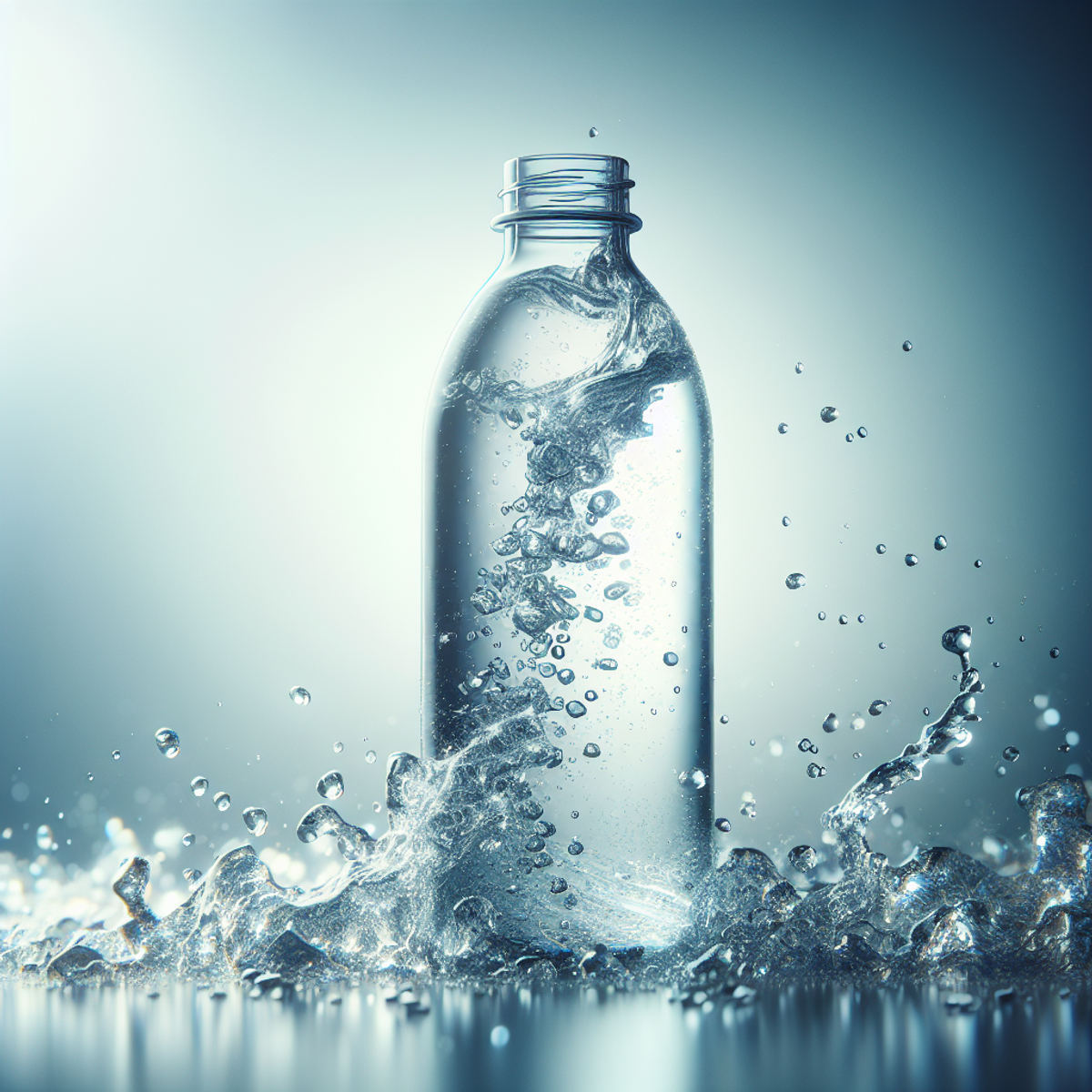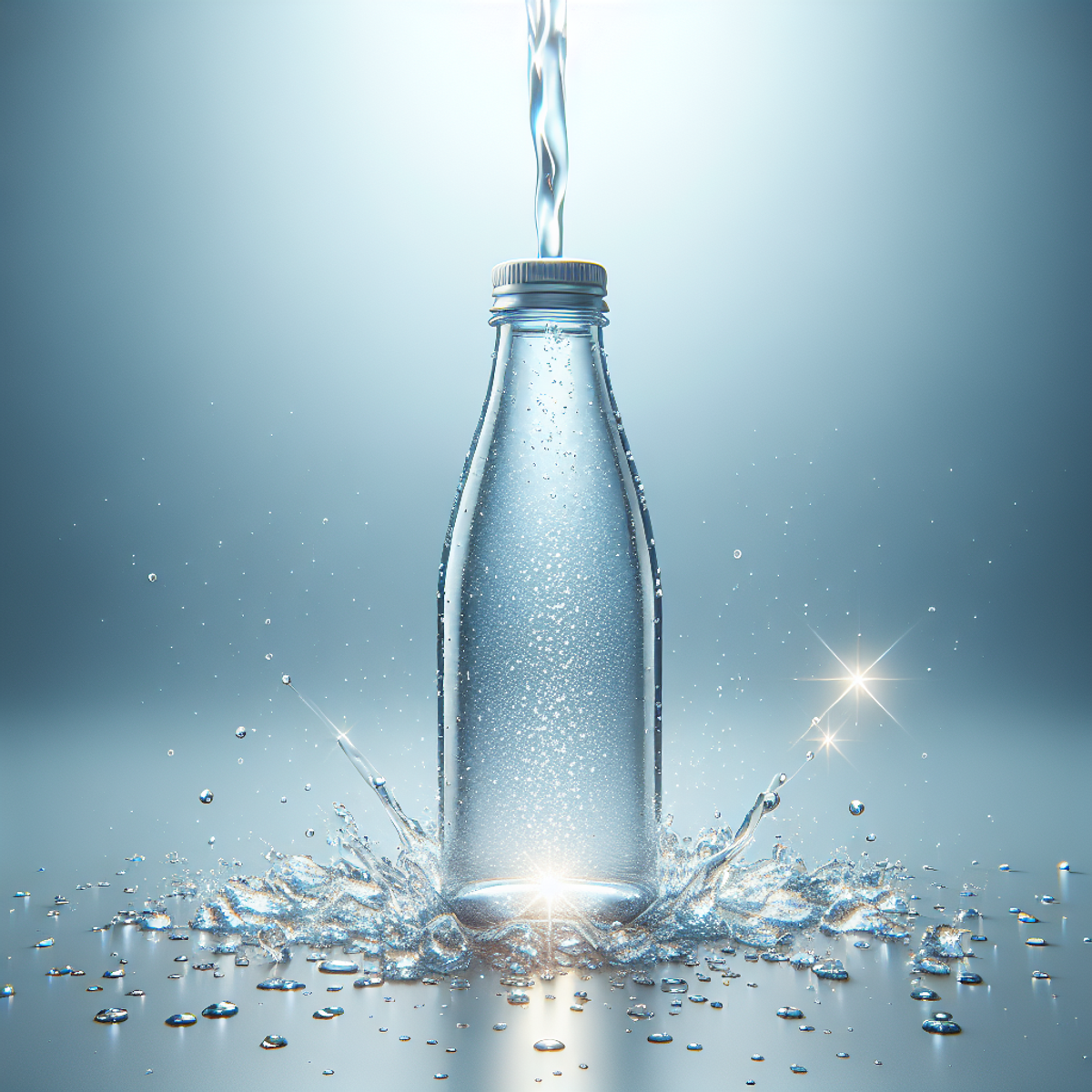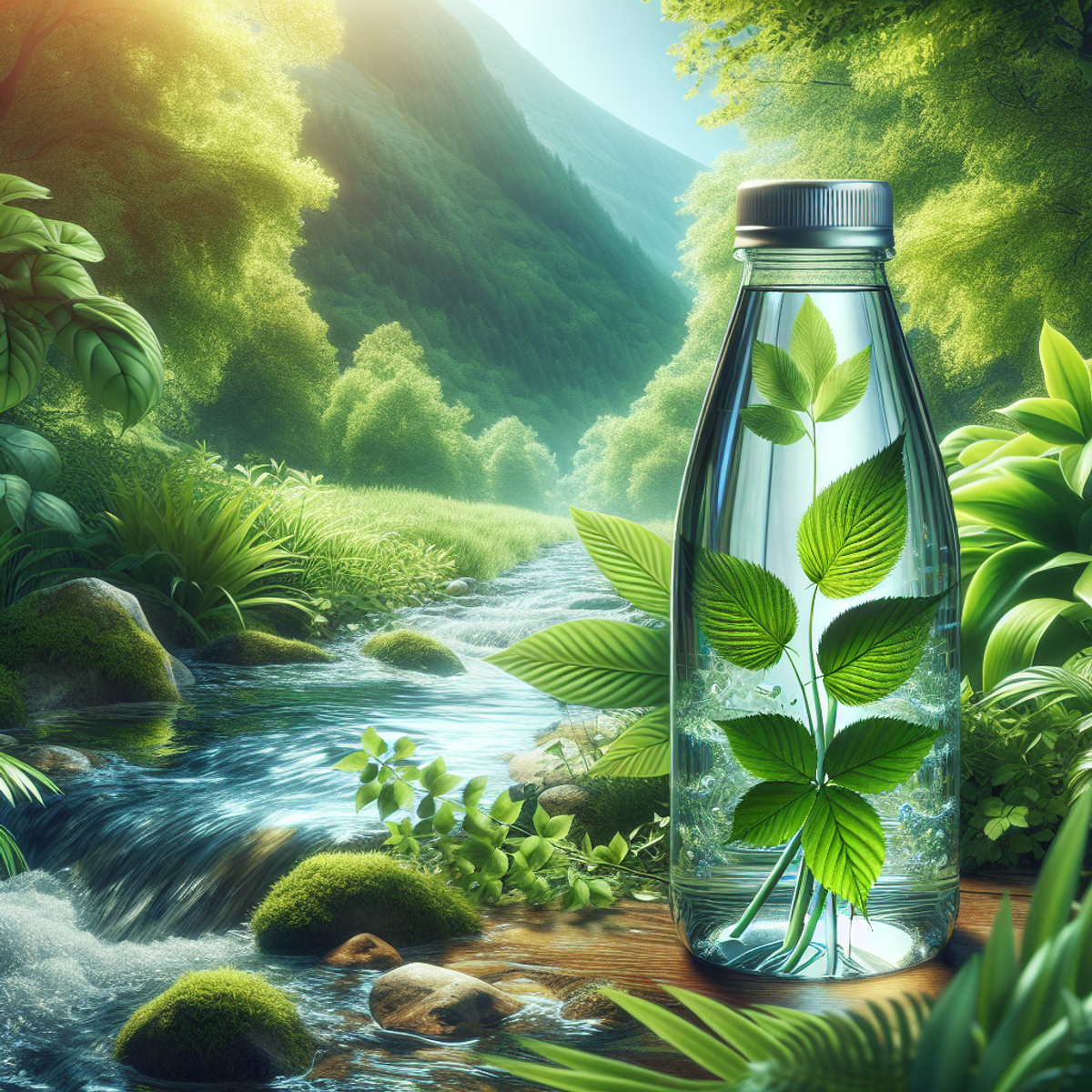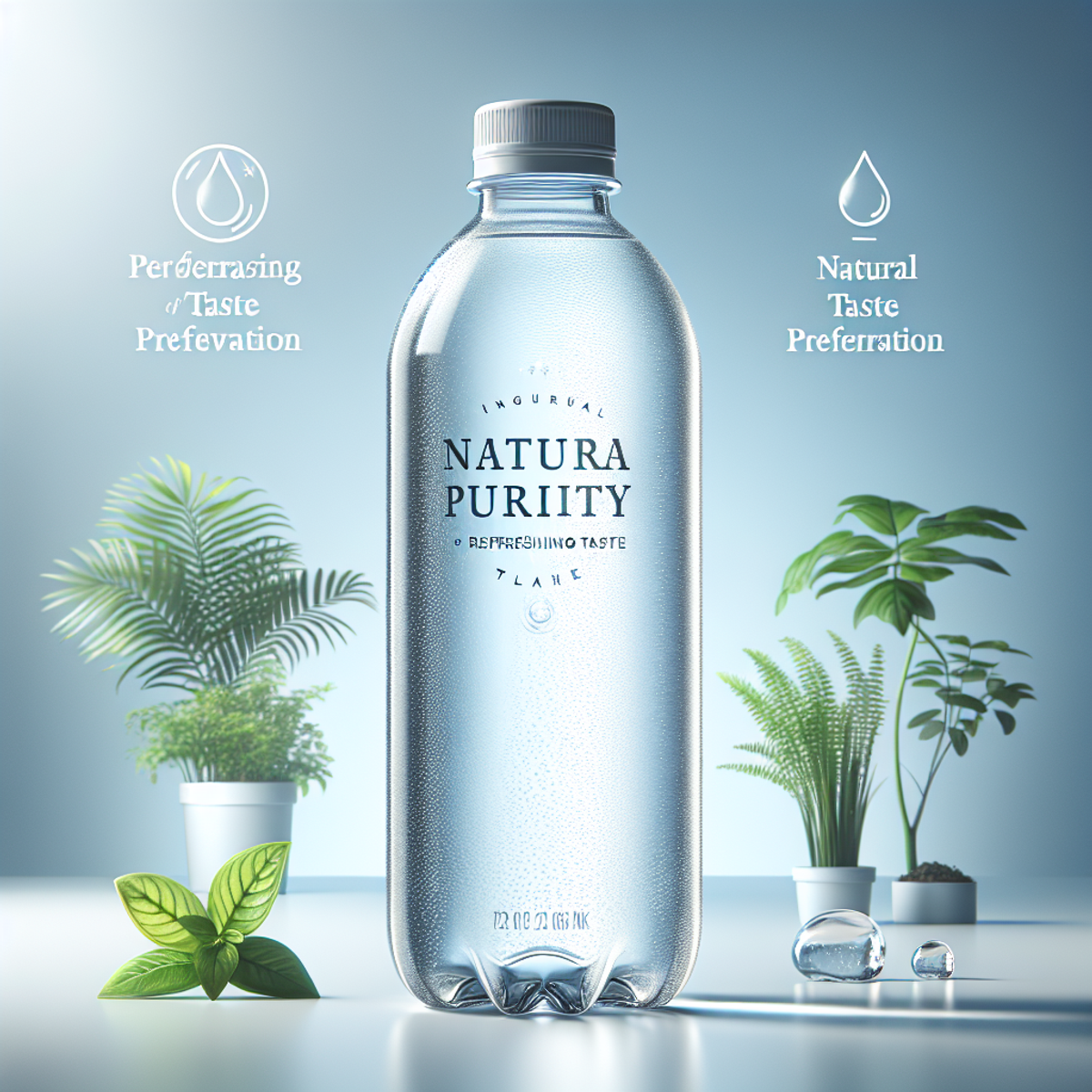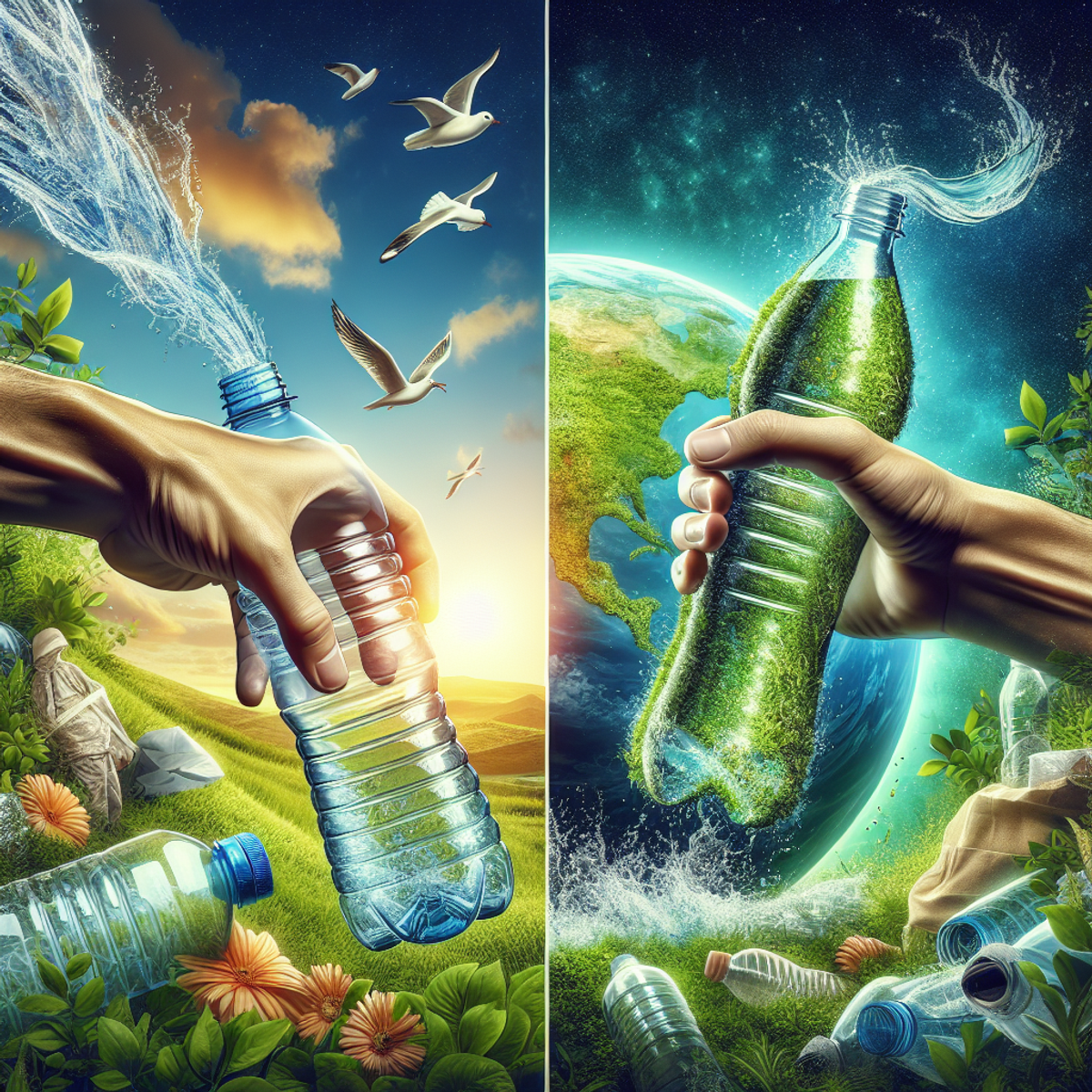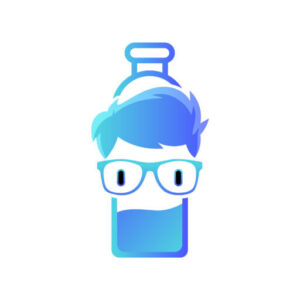Introduction
Bisphenol A, also known as BPA, is a harmful chemical found in many plastic products. It can seep into your food and drinks, posing a threat to your health. BPA disrupts your body’s hormone system by pretending to be estrogen, leading to various potential health problems.
On the other hand, we have non-toxic glass, the hero of this story. Unlike plastic, glass is safe and doesn’t contain any harmful chemicals. It’s transparent, allowing you to see exactly what you’re consuming. Glass bottles are an excellent choice for staying hydrated without worrying about potential dangers.
Why Non-Toxic Glass Is Important
Non-toxic glass offers several advantages over plastic:
- Safety: Glass doesn’t leach harmful chemicals into your beverages, making it a healthier option.
- Durability: Unlike plastic, glass is resistant to scratches and stains, ensuring that your bottles stay in good condition for longer.
- Sustainability: Glass is recyclable and can be reused multiple times, reducing waste and environmental impact.
If you prioritize your well-being (and let’s be honest, who doesn’t?), understanding the benefits of non-toxic glass is crucial. It’s all about making informed decisions for a healthier lifestyle.
“Choose glass for purity and peace of mind.” – Water Bottle Nerd
Are you ready to learn more about why non-toxic glass is superior to BPA-laden plastics? Let’s dive in!
Understanding BPA: The Endocrine Disruptor
Bisphenol A, commonly known as BPA, is a synthetic compound found extensively in plastics and resins. This chemical is a key building block of polycarbonate plastics and epoxy resins that line some metal food cans. BPA’s properties enable it to give products durability and clarity, but there’s a darker side to this seemingly helpful substance.
BPA is classified as an endocrine disruptor. What does that mean? Essentially, it can mimic the structure and function of hormone molecules within the human body. When BPA enters the body, it can bind to hormone receptors and interfere with the normal functioning of the hormone system. This interference can lead to a cascade of health issues.
The way BPA affects us is multi-faceted:
- It mimics estrogen, a primary female sex hormone, potentially causing hormonal imbalances.
- By binding with hormone receptors, BPA can trigger or block certain hormonal signals, leading to disrupted endocrine functions.
- The impact extends across various bodily systems reliant on hormonal regulation including growth, metabolism, and reproductive health.
Compelling evidence has linked BPA exposure to several endocrine disorders in humans. These disorders include but are not limited to:
- Diabetes
- Obesity
- Infertility
- Hormone-dependent tumors such as breast and prostate cancer
- Thyroid malfunction
Scientific studies have shown that even low levels of BPA exposure may be enough to cause these adverse effects. As hormones regulate critical functions in our bodies, any imbalance or disruption caused by chemicals like BPA should be taken seriously.
With growing awareness about these risks, many individuals are actively seeking safer alternatives to products containing BPA. In the next sections, we’ll explore in more detail the specific health issues associated with BPA and why non-toxic glass has emerged as a reliable choice for those looking to reduce their exposure to harmful chemicals.
The Role of BPA in Weight Regulation and Tumorigenesis
BPA’s interaction with the body is complex, especially when it comes to managing body weight and the risk of cancer. Here’s what you need to know:
Disruption of Body Weight Regulation by BPA
- Mimics Estrogen: BPA is sneaky. It acts like estrogen, a hormone that plays a crucial role in controlling metabolism and body weight.
- Affects Fat Cell Formation: BPA exposure can increase the formation of fat cells (adipogenesis), which may contribute to weight gain.
- Linked to Metabolic Syndrome: Continuous exposure to BPA may raise the risk of metabolic syndrome, a group of conditions that increase the chances of heart disease, stroke, and diabetes.
BPA and Its Potential Role in Tumorigenesis
- Activates Estrogen Receptors: BPA doesn’t just mimic estrogen; it also binds to estrogen receptors in the body. This can trigger various cellular changes that could potentially lead to the development of tumors.
- Concerns About Breast and Prostate Cancer: Researchers have focused on breast and prostate cancers due to their connection with estrogen. BPA might play a part in the initiation and progression of these types of cancer.
- Alters Genetic Expression: At a genetic level, BPA modifies how certain genes behave in cells. These alterations can create an environment favorable for the growth of cancer cells.
Understanding these impacts is like solving a puzzle – each piece reveals more about how BPA might be affecting our bodies. In the next sections, we’ll explore additional ways in which BPA can impact our health, particularly among vulnerable populations such as children.
BPA’s Detrimental Effects on Development and Overall Health, Especially in Children
BPA is not just another chemical; it poses a serious threat to our well-being. Children, in particular, are most affected by its dangers because their bodies and organs are still developing, making them more vulnerable to environmental toxins.
Early-Life Exposure: A Recipe for Developmental Problems
- In the womb: BPA can pass through the placenta, which means exposure begins even before birth. This crucial stage of development is when BPA can cause significant harm to the formation of organs and systems.
- In infancy and childhood: Exposure continues through everyday items such as plastic bottles and toys. During these early years, BPA has the potential to impact brain development and behavior. Studies have suggested a possible link between BPA and conditions like ADHD, anxiety, and depression.
- Disrupting hormones: BPA acts like estrogen in the body, which can disrupt the delicate hormonal balance needed for proper growth and development in children.
Long-Term Health Problems: Not Just a Kid’s Issue
- Continuous exposure: Whether it’s from canned foods or thermal paper receipts, it’s difficult to completely avoid BPA. Regular contact with this chemical means that we are constantly experiencing its effects.
- Effects throughout life: Research indicates a correlation between ongoing BPA exposure and chronic health problems such as diabetes, cardiovascular diseases, and even fertility issues.
It’s important to remember that these developmental and health problems do not exist in isolation; they affect entire communities and economies. As we deal with the consequences of early-life BPA exposure, healthcare expenses increase.
Protecting children from BPA is not just about securing their individual futures—it is about ensuring a healthier generation that can thrive without being threatened by harmful chemicals.
By opting for non-toxic alternatives like glass, we can avoid potential disruptions in development and long-term health problems. Unlike plastic, glass does not release any chemicals into our food or drinks. It is a safe choice for people of all ages, from babies to adults.
Next, let’s explore the reasons why non-toxic glass is not only safe but also an environmentally friendly option.
Non-Toxic Glass: A Comprehensive Overview of the Superior Alternative to BPA-Containing Materials
When we talk about non-toxic glass, we’re looking at a material that’s not just safe but also kind to the planet. So, what’s the deal with non-toxic glass? Let’s dive in and see why it’s getting thumbs up all around.
Safe for You and the Planet
Non-toxic glass is exactly what it sounds like—glass that doesn’t contain any harmful chemicals. It’s the go-to choice for health-conscious folks who want to keep it clean, from food containers to water bottles.
- Made from natural substances like sand, soda ash, and limestone, this type of glass is free from funky stuff that could disrupt your body’s vibe. No BPA, no phthalates, no worries.
Eco-Friendly All the Way
- Production: Crafting non-toxic glass means less pollution and energy usage compared to other materials. It’s like giving Mother Nature a high-five.
- Disposal: Done with your glass item? Recycle it! Glass recycling is a loop of goodness—less waste in landfills and less raw materials needed for new products.
Why Glass Wins
- Harmful chemicals? Nope. Choosing non-toxic glass means you’re opting out of the BPA drama and keeping your food and drinks pure as they should be.
- Variety for days. Non-toxic glass isn’t just for kitchenware; think solar panels, tech gadgets, and even some fashion items—versatility is its middle name.
By now, you’ve got a crystal-clear picture of why non-toxic glass is getting all the love. It’s safe, it’s eco-friendly, and it kicks harmful chemicals to the curb. Next up, let’s look at how making this switch can sprinkle some extra goodness into your life.
The Many Benefits of Choosing Non-Toxic Glass Over BPA-Plagued Alternatives
When it comes to selecting materials for everyday use, the advantages of non-toxic glass are crystal clear. Let’s break down the key benefits that make non-toxic glass a standout choice:
Ensuring Food and Beverage Safety Through Secure Storage Solutions
- Peace of Mind with Purity: With non-toxic glass, what you see is what you get—no hidden nasties. Foods and beverages are safe from BPA contamination.
- Taste Preservation: Glass doesn’t transfer flavors or odors, keeping your culinary creations as intended, pure and untainted.
Maintaining Hygiene and Allergy-Free Environments with Non-Porous, Hypoallergenic Glassware
- Non-Porous Perfection: Thanks to its sleek surface, non-toxic glass doesn’t harbor bacteria or germs. Just wash and go for a clean start every time.
- Hypoallergenic Haven: Allergy sufferers rejoice! Non-toxic glass is kind to your health, reducing the risk of allergic reactions linked with other materials.
Promoting Environmental Sustainability by Embracing a Recyclable Lifestyle with Glass
- Eco-Friendly Choice: Choose glass, choose the planet. Fully recyclable, it’s the green thumbs-up in a world where sustainability counts for everything.
- Longevity Leads the Way: Durable and designed to last, non-toxic glass products often outlive their plastic counterparts, resulting in less waste.
Each point not only underscores the superiority of non-toxic glass but also serves as a reminder of its contribution to a cleaner and healthier lifestyle. Whether it’s sipping from a glass water bottle or storing leftovers in a glass container, these choices add up to create significant positive impacts on personal health and the environment.
Making the Switch: Practical Tips for Incorporating Non-Toxic Glass into Your Daily Routine
Ready to embrace a BPA-free lifestyle with non-toxic glass? Here’s your go-to guide for making an easy and impactful transition:
Identify Authentic Non-Toxic Glass Products
- Check Labels: Look for products clearly labeled as ‘BPA-free’ to ensure you’re not bringing any unwanted chemicals into your home.
- Research Brands: Some brands are dedicated to non-toxic, sustainable production. A quick online search can reveal which ones prioritize consumer health.
- Quality Over Price: While budget-friendly options are tempting, investing in high-quality glass may pay off in longevity and safety.
Educate and Spread Awareness
- Share Information: Discuss the implications of BPA with friends and family. Knowledge is power, and sharing what you’ve learned can impact the choices of those around you.
- Social Media Influence: Use your platforms to advocate for BPA-free living. A post or story about your switch to non-toxic glass can inspire others.
- Community Involvement: Attend local events or workshops that focus on healthy, sustainable living to connect with like-minded individuals.
By taking these steps, not only do you contribute to your well-being but also inspire a community-wide shift towards healthier practices. With each person who opts for non-toxic glass, we’re one step closer to a cleaner planet and a thriving society.
The Future is Glass-Clear: A Healthier Pathway Without BPA
It’s time to take action and prioritize our health! For too long, we’ve been dealing with the presence of BPA in our lives, as it sneaks into our bodies and disrupts our hormones. But here’s some great news: there’s a solution on the horizon that’s both effective and easy to implement—non-toxic glass!
Getting rid of BPA isn’t just beneficial for individuals; it’s also a significant victory for communities and ecosystems worldwide. Just imagine how amazing it would be to live in a world where:
- Every drink and every meal we enjoy is free from harmful chemicals.
- Children can grow up healthy and unaffected by substances that interfere with their hormone systems.
- Wildlife can thrive without being threatened by the toxic remnants we leave behind.
This vision can become a reality, thanks to non-toxic glass. It not only prioritizes our well-being but also plays a crucial role in preserving our environment. Here are some steps you can take to contribute:
- Be the Change: Start replacing plastic items with glass alternatives in your home, starting with one item at a time.
- Spread the Word: Share your personal journey towards living a BPA-free life; your story might just inspire others to do the same.
- Support Legislation: Advocate for policies that aim to reduce the use of BPA and encourage the adoption of safer options.
The choice is clear, just like non-toxic glass itself. Let’s come together to create a future where our well-being is never compromised, where future generations inherit a cleaner planet, and where BPA becomes nothing more than a distant memory. So here’s to raising our glasses (the non-toxic ones, of course) and toasting to a brighter and healthier tomorrow! 🥂

